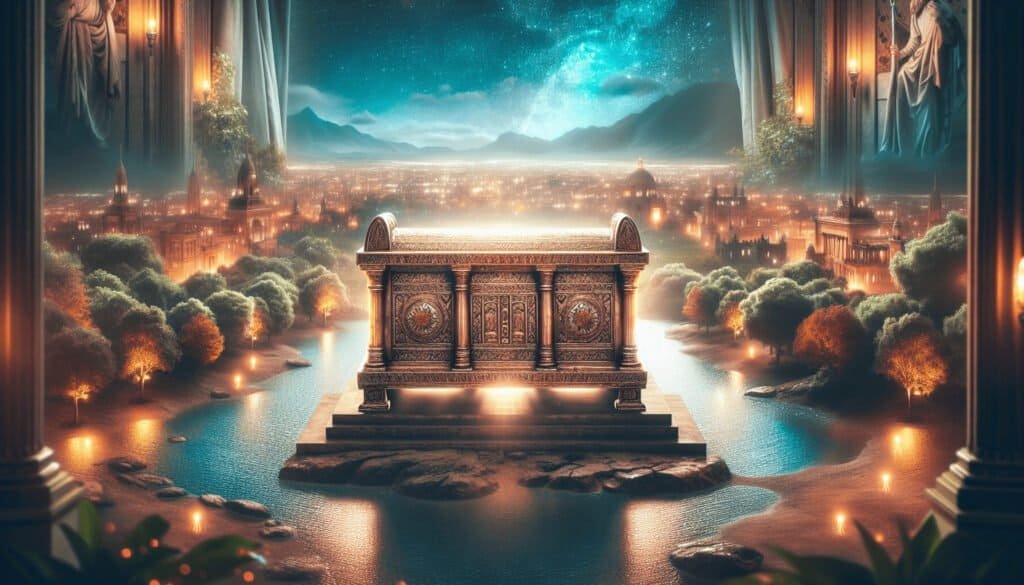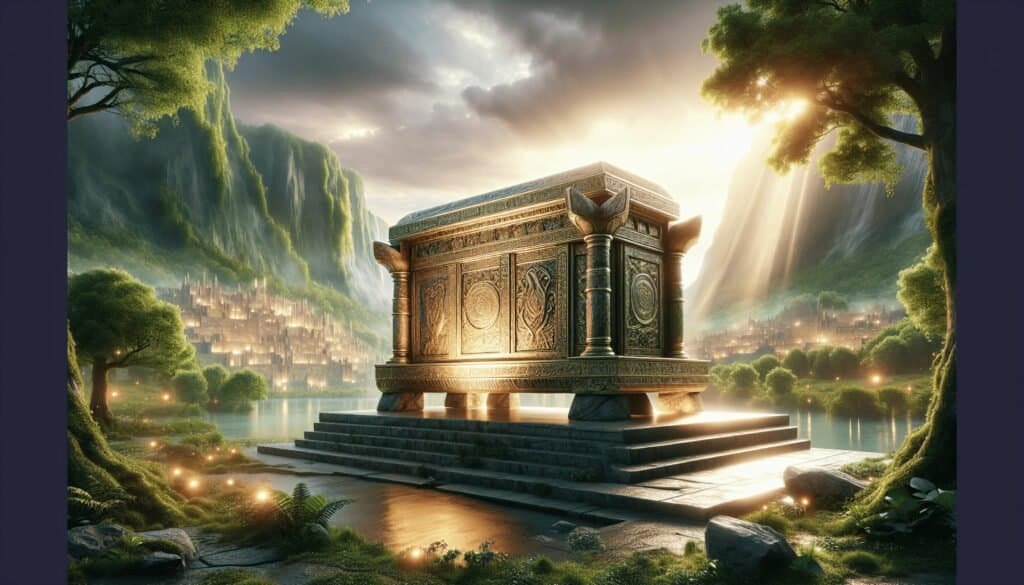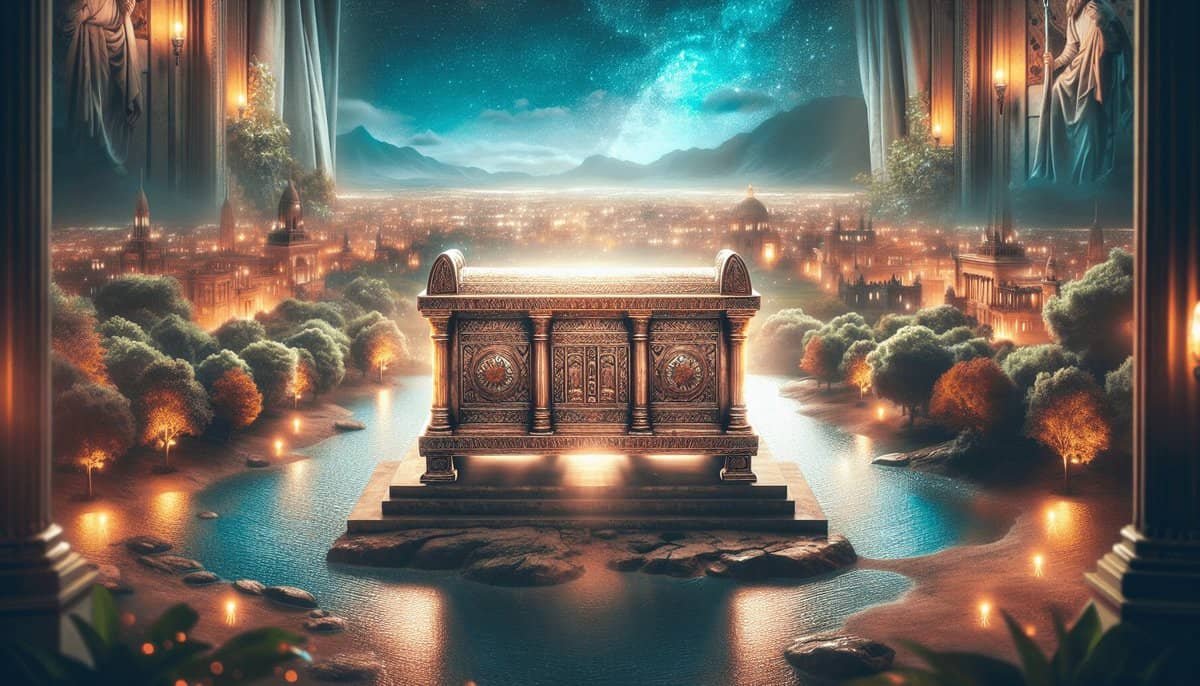What does it mean to lay claim to something sacred, especially when that something is as elusive and storied as the Ark of the Covenant?

The Ark of the Covenant: More Than a Box
The Ark of the Covenant is not just an artifact; it embodies a rich tapestry of religious significance and historical intrigue. Picture a gold-covered box, skillfully crafted, housing the tablets of the Ten Commandments and a bowl of manna. It’s an object that stirs not only the imagination but also deep theological discussions.
Before we get too wrapped up in its aesthetic allure, let’s acknowledge that the Ark has stirred debates throughout history about its last known resting place. Was it nestled safely in Jerusalem? Or has it wandered into the shadows of obscurity in another hidden locale? You’ll find opinions as varied as the hues on a painter’s palette.
A Chosen City: Jerusalem’s Claim
Jerusalem: The Heart of Tradition
When one thinks of the Ark, Jerusalem often springs to mind. The city holds a sacred status in Judeo-Christian tradition, revered not just as a geographical location but as a spiritual center. It’s the city where King Solomon built the First Temple, the sanctioned abode for the Ark.
Jerusalem’s longstanding claim to the Ark is rooted in compelling scriptural references. Numerous passages in the Bible discuss the Ark’s presence in the city, most notably in 2 Samuel and 1 Kings. Here, the city is depicted as a divine focal point, a claim to which many still ardently adhere.
The Solomon Connection
King Solomon’s role in the Ark’s history cannot be overstated. His construction of the First Temple in Jerusalem was intended, quite purposefully, for housing the sacred Ark. The biblical narrative describes a grand event—the Ark’s transport into the Holy of Holies, symbolizing God’s covenant with Israel. This act was not merely ceremonial; it affirmed Jerusalem’s significance as the spiritual nucleus for the Israelites. You might say that Solomon didn’t just build a temple; he erected a monument to divine presence and human memory.
Abyss of Disputes: Other Claimants
Ethiopia: A Unique Perspective
However, let’s not forget the fascinating Ethiopian narrative concerning the Ark. The Ethiopian Orthodox Church claims that they possess the true Ark, safeguarded in a church in Axum. They maintain that this Ark is a revered symbol of national identity and faith.
Ethiopia’s claim also dives deep into biblical connections, tracing back to the Queen of Sheba’s visit to King Solomon as recorded in 1 Kings. This story captivates many due to its implications that the sacred object may have found its way to African soil. The notion of a royal lineage extending from this connection adds layers of complexity. You can’t help but wonder—what if the Ark’s journey involved more than mere passage? What if it was also about power and identity in an evolving world?
Other Competing Locations
Beyond Jerusalem and Ethiopia, several other locations have staked their claim to the Ark’s resting place. Some assert that the Ark is hidden in a cave on Mount Nebo, where Moses is said to have viewed the Promised Land one last time. The lore surrounding this possibility fuels whispers in both academic and theological circles.
Then there’s the theory suggesting the Ark may have found refuge in Shiloh, the ancient religious center where the Ark was first housed before the temple’s construction. Visitors and historians alike are drawn to the historical remnants that speak of a vibrant community that once thrived there. Each claim serves as am intriguing counterpoint to Jerusalem’s prominence.
Archaeological Excursions
The Search for the Lost Ark
For centuries, archaeologists have embarked on quests to uncover the Ark’s resting place, armed with tools, scripture, and a sense of adventure. Some have positioned themselves firmly behind Jerusalem, directing excavations around the Temple Mount, scrutinizing every stone for signs of the sacred.
In contrast, others have ventured beyond to UNESCO heritage sites in Ethiopia. These explorations invite scrutiny and skepticism, often blurring the line between archaeology and pilgrimage. Curiosity leads many amateur and professional archaeologists to wonder—if the Ark could speak, what stories would it tell from its myriad homes?
Notable Finds and Theories
While no one has definitively discovered the Ark, various archaeological findings do offer tantalizing clues.
| Location | Findings | Significance |
|---|---|---|
| Jerusalem | Remnants of the First Temple | Illustrates the Ark’s historical context |
| Ethiopia | Ancient churches proclaiming Ark’s presence | Showcases an alternative narrative |
| Mount Nebo | Early religious artifacts | Points to historic significance |
These findings provide layers of insight, indicating that perhaps the Ark’s narrative transcends a single location. Each archaeological site tells part of a broader story, one shaped by belief, conflict, and the pursuit of meaning.

Scriptural Insights
The Ark in the Old Testament
In the Old Testament, the Ark’s role evolves—from a mobile sanctuary during the Israelites’ wanderings through the desert to a fixed presence in the Temple in Jerusalem. It is often depicted as the physical manifestation of divine law and presence.
Consider how the Ark’s journey from the desert to the Temple reflects broader themes of guidance, covenant, and faith. The stories interwoven with the Ark resonate with your own quest for meaning, drawing you into a narrative where human actions converge with divine will.
The New Testament’s Perspective
You might be surprised to find that while the Ark does not play a central role in the New Testament, its themes echo throughout the text. For example, the idea of God living among His people is epitomized in the figure of Jesus. This parallel offers a fresh viewpoint on the Ark as a cultural and theological symbol, further enriching its significance across time.
Cultural Significance
The Ark in Popular Culture
The Ark has transcended its sacred roots to become a symbol in popular culture—think of “Indiana Jones,” where it’s depicted as an object of both mystery and adventure. The cinematic portrayal ignites curiosity about the Ark’s actual attributes and history, occasionally overshadowing the profound cultural and religious significance it holds.
It’s interesting how such portrayals foster extensive discussions about heritage and identity. The quest for the Ark, whether in fiction or reality, provokes you to ponder: What does this narrative signify about our understanding of history, faith, and even ourselves?
Theological Implications
The theological conversations surrounding the Ark’s whereabouts are equally compelling. The question of where the Ark rightfully belongs—which city is deserving of its presence—serves not only as a historical query but as a philosophical one.
Each claimant city wrestles with its heritage, shaping its cultural identity around the narratives that tether them to the Ark. You see the relations to power, community, and belief as intertwined threads in the larger tapestry of human experience. Is it possible that the Ark itself catalyzes ongoing discussions about the divine’s place in our lives?
Modern Perspectives: Bridging the Past
Finding Common Ground
As you reflect on the various narratives surrounding the Ark’s presumed locations, consider how they can coexist despite differing faith traditions. Each city—Jerusalem, Axum, Shiloh—fosters a sense of ownership over the past while simultaneously cultivating a dialogue about the future.
In our modern world, ancient artifacts like the Ark serve to remind us of shared histories and interconnected destinies. They invite you to deepen your understanding of cultural complexities and engage in discussions that transcend borders.
The Quest Continues
The search for the Ark of the Covenant continues, not solely in the geographic sense but also in the pervasive human quest for meaning, understanding, and spiritual connection. Each narrative fosters dialogue that invites you to reflect on personal and collective journeys—an exploration as rich as any archaeological site.
The stakes are high, and the pursuit is fraught with ambiguity and contradictions. Yet, therein lies the beauty of the quest itself. It reminds us of our responsibility to honor, preserve, and learn from the narratives that have shaped our understanding of the divine.
Conclusion: The Ark and Your Journey
The quest for the Ark of the Covenant—whether in Jerusalem, Ethiopia, or elsewhere—serves as a potent symbol of faith, power, and identity. It illustrates how sacred histories shape communities and spark ongoing debates about rightful ownership.
As you reflect on the layers of history, archaeological significance, and modern implications surrounding this legendary object, remember that your own narrative intersects with centuries of belief and yearning.
In the end, perhaps it’s less about the physical location of the Ark and more about the journey it inspires. Whether it’s within the walls of ancient cities or within the quiet corners of your heart, the search for the Ark translates into a search for meaning and connection, one that is timeless in its essence.



